From the ABC:
Figures for the September quarter have shown revenue dropped by almost $450 million compared to the corresponding period last year.
The decrease helped to fuel a deficit of $748 million for the first three months of the financial year.
The declining revenue combined with rising costs in the health sector mean WA’s projected budget deficit of $2.7 billion is set to worsen.
Mike Nahan conceded the budget was turning into a nightmare and confirmed the budget position would deteriorate.
But he said the extent would not be clear until a mid-year budget review next month.
“We’re going to come out in a couple of weeks with a mid-year review and we’ll put out all our assessments there,” he said.
…Dr Nahan attributed the contraction in revenue to reduced iron ore and gas royalties, lower state tax revenue and a slump in GST payments from the Commonwealth.
…Dr Nahan said the Government was still struggling to contain rising costs in the health portfolio, and would consider all options to keep public sector spending growth under control.
“We are looking at all sorts of issues that we have to do. But a freeze is a possibility, but we will do that only as a last resort,” he said.
This pantomime would be amusing were it not for the real people that are on the end of it. The WA budget isn’t just going to miss, it is going to collapse versus expectations.
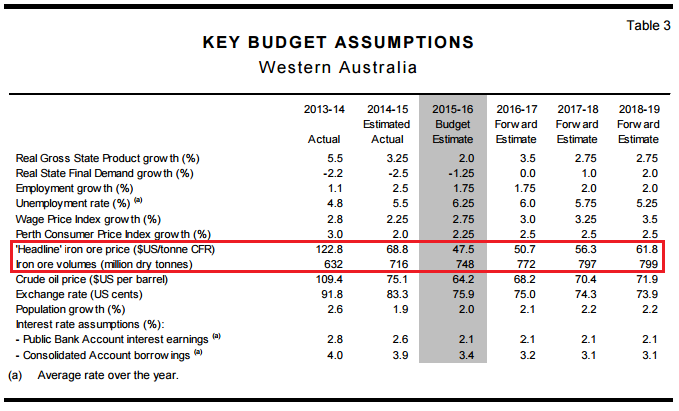
The iron ore prices for this year are about right but they should read $35 for 2016/17 and $25 for 2017/18 as well as 2018/19. This removes $5.6 billion from forward revenues. The oil price is also $10 too high across the forward estimates which drives it up to a total revenue write down of $6 billion over three years. In other words, these two prices alone will slam the deficit lower and completely wipe out the amusing 2018/19 surplus:
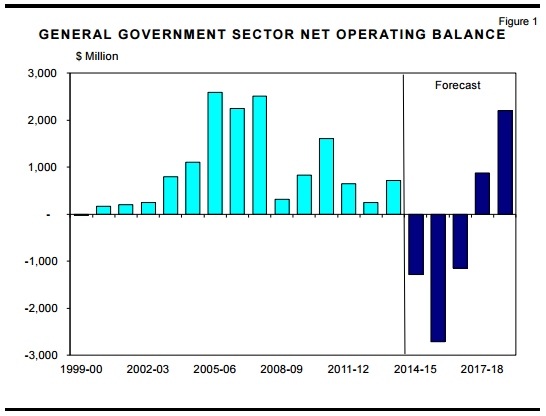
But that is only the tip of the iceberg. As shown above, as well as the iron ore price, state final demand, wages growth, and population growth were all projected to dip in the short-term before rebounding in the out-years.
Western Australia’s population growth has already undershot the Budget’s forecast. In the year to March 2015, it was just 1.4% – well below the Budget’s 1.9% forecast for 2014-15 (see next chart). It’s also hard to see how it will miraculously recover when the outlook for business (mining) investment is so poor, along with the ongoing slump in iron ore prices. In fact, there is a real prospect of population growth turning negative:
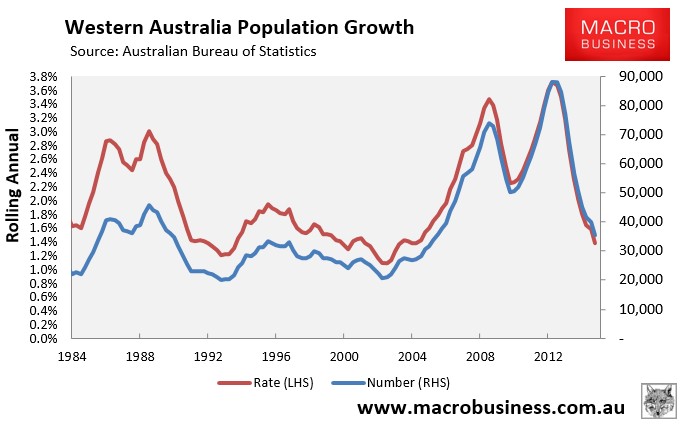
Then there’s wages growth in Western Australia, which came in at just 1.98% in the year to September 2015 – well below the Budget’s forecast of 2.25% growth (see next chart). Again, the gradual rebound in wages growth projected in the Budget – to 3.5% by 2018-18 – is built on foundations of bullshit, given the ongoing unwind in business investment and commodity prices and, now, prospective wage freezes:
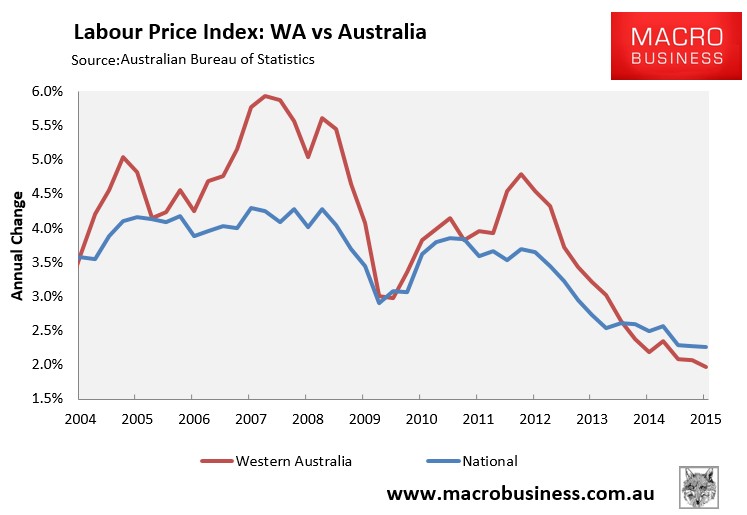
Finally, Western Australia’s unemployment rate – 6.4% (trend) as at October 2015 – has already smashed through the Budget’s peak projection of 6.25% in 2015-16 (see next chart).
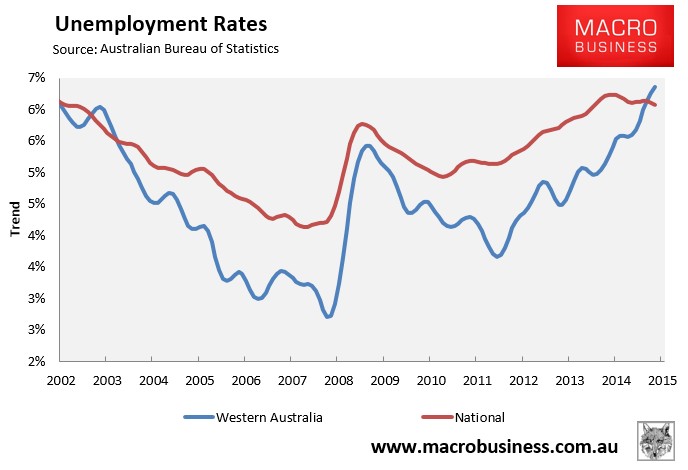
The worst is yet to come, too. Business investment drives jobs and the Budget forecasts that it will taper-off rather gently:
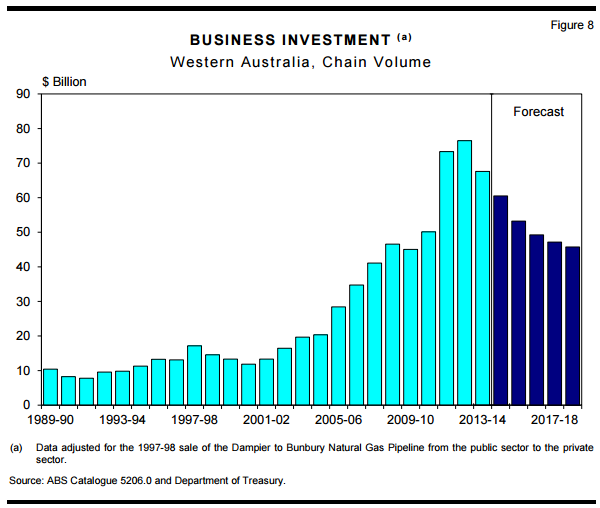
According to the WA Government, by 2018 business investment is expected to remain at an astounding $45.7 billion. Here it is presented on a chart as the dashed black line:
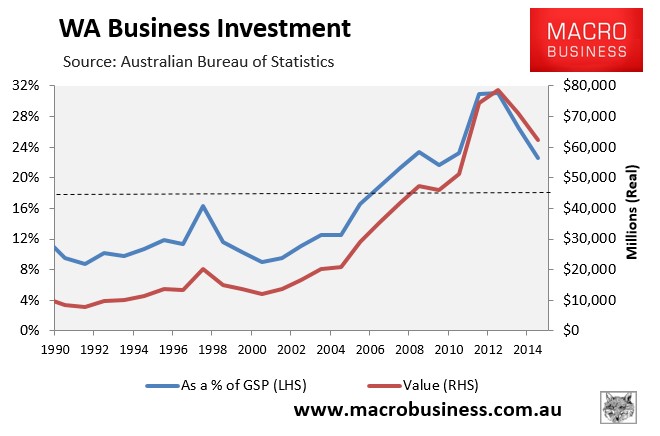
Yet Gorgon, Wheatstone, Roy Hill, Sino Iron, and all of the other iron ore projects will be finished by 2018. Here’s how this discrepancy is explained it in the Budget:
Offsetting this [mining investment] to some extent, are a range of commercial projects in the investment pipeline, particularly in the retail sector, with a number of large shopping centre expansions and new developments planned over coming years.
Very amusing! According to the quarterly ABS capex survey, mining equals 80% of total capex in Western Australia and always has:
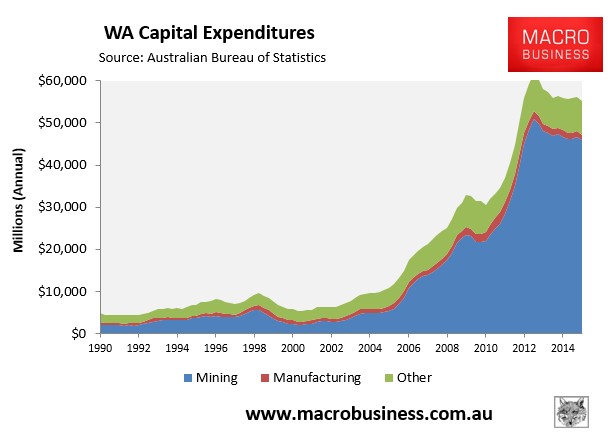
It defies comprehension that non-mining business investment, especially in retail, will pick-up the slack once mining investment, population growth and wages keep falling. Moreover, consumers will be retrenching spending as house prices crash:
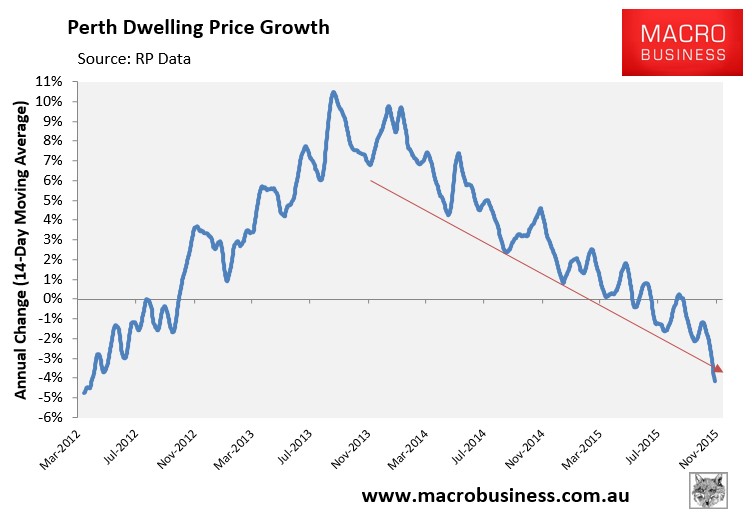
Which is going to get much worse as the dwelling construction super-boom builds a huge glut of properties before also cratering and spraying more unemployment all over:
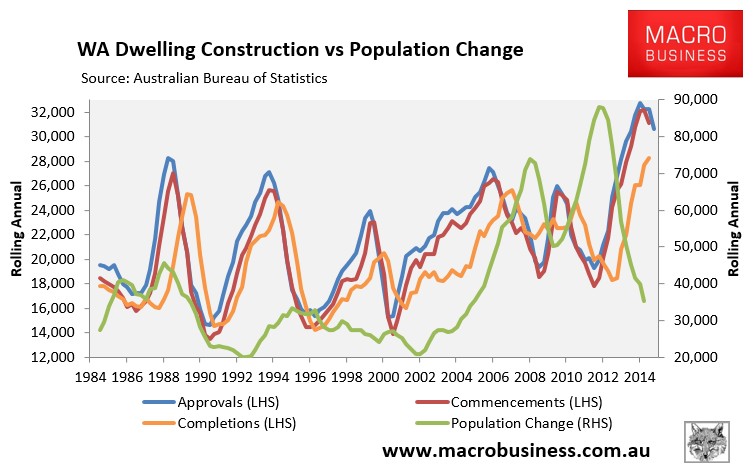
The forecast outlook for total business investment should be in the vicinity of half what is hoped for.
With business investment, dwelling construction and house prices, population growth, wages growth, unemployment, and commodity prices all far worse than anticipated in the Budget, gross state product and state final demand will also significantly undershoot.
In short, the WA Budget resembles much more a super hero comic than an official document. In the story, the invincible Dr Nahan dons his stretchy suit, flexes his fiscal muscles and apprehends the slavering deficits scoundrel.
Sadly, in this reality, he is a quivering bureaucrat soiling his undies as the greatest economic calamity of our time bears down upon him.

